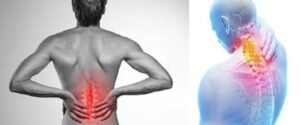Spinal infections – a rare yet effective cause of spinal deformities.The infection generally weakens the bone around the region and it can also cause them to collapse or crumble causing spinal deformity in the body.


Spinal infections are the rare infections which occur in or around the spine region of the body. It is one rare condition which can lead to the permanent damage of the spinal cord of a person. It involves the intervertebral disc space, the vertebral bones, the spinal canal, or the adjacent soft tissues of the spine.
The infection is generally caused by bacteria, fungal organisms, and different types of viruses, which reach the spine through the main bloodstream of the body. The infection generally weakens the bone around the region and it can also cause them to collapse or crumble causing spinal deformity in the body.
Symptoms of spine infection
There is a list of symptoms which can vary from one person to another and can also vary in the intensity. Some of the common signs and symptoms of the infection are mentioned below:
Ø There will be a sudden pain in the spinal region with a change in the intensity throughout the day
Ø Unusual pain in the arms and legs of the person
Ø There will be times in which the person loses its sensation in the affected area
Ø There are a few but some cases have been registered where the person suffered paralysis
Ø There will be less or no control on the bowel and bladder of the body
Ø The person might suffer from fever throughout the phase
Diagnosis of infection
Generally, most of the doctors recommend the use of X-ray in the starting process of diagnosing which is also normal for the first two to four weeks of the infection. The other way to diagnose the infection is through MRI which shows the infection region and the nature of the infection.
Different types of spinal infections
There are six different types of spinal infections which are dependent on the cause and area they affect:
Ø Vertebral Osteomyelitis–These types of infections generally occur in the lumber spine of the body which cause pain in arms, leg, fever, weight loss and problems during walking or using your hands.
Ø Discitis–This is the most uncommon spinal infection which occurs on its own or after the surgery of the person. Some of the common symptoms of the infection are pain during spine movement, radiating pain in various body regions, fever and chills.
Ø Spinal Epidural Abscess–It is another type of infection which is found in the lumber region of the body and causes weakness, skin boils, back pain, spine tenderness.
Ø Spinal subdural empyema–This infection is also rare which is caused by another infection in the body and can cause fever and arm or leg pain in the body.
Ø Meningitis–It can cause swelling in or around the brain and spine region of the body. It can also spread rapidly and can cause severe complications in the body if not treated on time.
Ø Spinal cord abscess–The development of the infection is from inside the spine which makes it rare and can cause fever, back pain, and a decline in spine function.
Risk factors of spine infections
Ø People who are suffering from drug abuse have the chances of developing the disease.
Ø Diabetes is one of the reasons for the infection
Ø Haemodialysis or renal failure can also cause the infection
Ø Immunosuppression which is caused by alcohol, chronic steroid use, cancer or even by AIDS
Ø Infection caused by the spinal surgeries or prior invasive procedure
Ø Infectious endocarditis
Ø Being into older age also increases the chances of getting infected by the condition.
Treatment
The most common treatment for spine infection starts with the consumption of intravenous antibiotic medications, bracing, and proper rest for the body. Vertebral discs do not have a proper blood supply so when the bacteria has attacked, the body’s immune cells and antibiotic medications have difficulty reaching the infection site. On the other hand, bracing is recommended to improve the stability of the spine while the infection heals.
The consumption of antibiotics is recommended for six to eight weeks with bracing which will improve the stability of the spine while the infection heals. The other method for the treatment is through surgery and is recommended when the condition of the infection doesn’t improve with the use of antibiotics. Surgery is used to treat the infection, to diminish pain, prevent worsening of spinal deformity, and provide relief from any neurologic compression.


Dr Satnam Singh Chabra, Director
Department of Neurosurgery
Sir Ganga Ram Hospital, New Delhi












